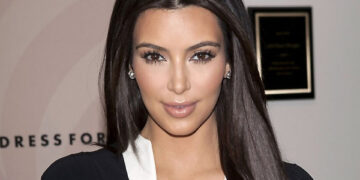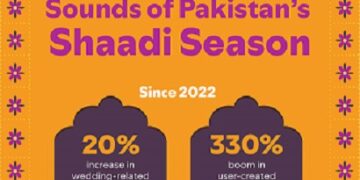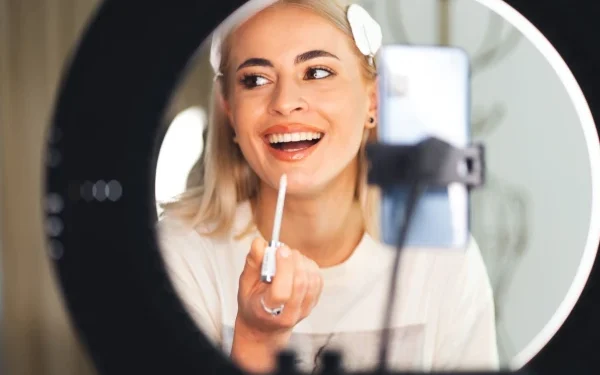The Hidden Dangers of Following TikTok Skincare Tips
TikTok, the popular short-video platform with over a billion users globally, has become a go-to destination for beauty advice, skincare trends, and do-it-yourself (DIY) hacks. While many users—especially teens—turn to these viral videos for tips to improve their appearance, experts are raising serious concerns about the potential harmful effects these trends can have on young skin.
A growing body of dermatological research and health expert warnings suggest that many of the skincare practices being promoted on TikTok can lead to skin damage, long-term dermatological issues, and even emotional harm—particularly for children and teenagers whose skin is more delicate and still developing.
1. Overuse of Active Ingredients Can Lead to Serious Skin Issues
One of the most concerning trends among TikTok users is the overuse of potent active ingredients, including glycolic acid, salicylic acid, benzoyl peroxide, and retinoids. While these ingredients are commonly used in dermatology to treat issues like acne, they must be used with caution and under professional supervision—especially in young individuals.
Recent studies show that many teens are applying 6 to 12 different skincare products daily, often without understanding how the active ingredients interact with one another. This can cause a condition known as “skin cycling overload,” leading to:
- Irritation and inflammation
- Severe dryness and flaking
- Breakouts and allergic reactions
- Swelling and redness
“Using multiple active ingredients together—especially strong exfoliants like glycolic acid and salicylic acid—can compromise the skin barrier and lead to painful outcomes,” explains Dr. Maria Gonzales, a dermatologist based in New York. “Teen skin is more sensitive and less tolerant to such aggressive treatments.”
Parents and guardians should monitor the types of skincare products their children use and encourage them to consult a dermatologist before experimenting with potent ingredients.
2. Skipping Sunscreen: A Critical Oversight in Many TikTok Routines
Despite the rising popularity of 10-step skincare routines on social media, sunscreen remains significantly underused. According to recent findings, only 26% of TikTok-promoted skincare routines include sun protection, even though many of these routines involve ingredients that increase the skin’s sensitivity to sunlight.
Commonly used ingredients like retinoids, AHAs (alpha hydroxy acids), and vitamin C can leave the skin more vulnerable to UV damage if sunscreen is not applied regularly. The consequences of skipping sunscreen include:
- Increased risk of sunburn
- Premature skin aging
- Hyperpigmentation and dark spots
- Long-term risk of skin cancer
“It’s alarming to see young people following these intense skincare regimens without the basic protection of sunscreen,” says Dr. Anjali Mehta, a clinical dermatologist. “SPF is not optional—especially when you’re using products that peel away the top layers of skin.”
Experts recommend using a broad-spectrum sunscreen with SPF 30 or higher every day, even when indoors or during cloudy weather, as UV rays can penetrate through windows and cloud cover.
3. The Emotional and Mental Toll of TikTok Beauty Culture
Beyond the physical harm, TikTok’s beauty content is also affecting the emotional and psychological well-being of its young audience. The platform is saturated with content promoting flawless skin, anti-aging treatments, and unrealistic beauty standards, often through filtered videos and edited images.
Exposure to such content can lead to:
- Low self-esteem and body dysmorphia
- Unrealistic expectations about beauty
- Anxiety and obsessive skincare behaviors
- Early onset of cosmetic intervention desires
“When 12-year-olds are buying anti-aging serums and microneedling kits, it’s a red flag,” says child psychologist Dr. Lena Richards. “These trends are conditioning kids to believe that their natural appearance is not good enough.”
A report from the American Psychological Association (APA) suggests that repeated exposure to beauty idealism on social media contributes to increased body dissatisfaction, especially among teenage girls.
4. DIY Beauty Hacks: A Risky and Unregulated Trend
Perhaps the most dangerous aspect of TikTok beauty culture is the popularity of DIY hacks using home ingredients and unproven methods. These often go viral for being cheap, “natural,” or instantly effective—but can result in serious harm when applied to the skin.
Some of the most alarming examples include:
- Applying lemon juice directly to the face: Highly acidic and can cause chemical burns.
- Using toothpaste to treat acne: Contains harsh chemicals that strip the skin of moisture and damage the protective barrier.
- Baking soda scrubs: Can drastically alter the skin’s pH and cause abrasions.
- Homemade sunscreens: Often lack any real SPF protection and give a false sense of safety.
- Microneedling at home without sterilization: Carries a risk of infection, scarring, and long-term skin damage.
- Essential oils used without dilution: Can cause rashes, allergic reactions, and even phototoxicity when exposed to sunlight.
“These are not beauty hacks—they’re dangerous experiments,” warns Dr. James Patel, a skin specialist. “The skin is a vital organ, and applying untested, unregulated substances to it can result in permanent damage.”
Understanding Why TikTok Beauty Trends Are So Appealing
So why are teens drawn to these risky trends in the first place?
TikTok videos are short, engaging, and often feature influencers or peers who appear relatable. The beauty routines shared are typically presented as easy, affordable, and instantly effective—qualities that strongly appeal to younger audiences.
The viral nature of these trends, combined with the lack of regulation, allows misinformation to spread rapidly. Unlike medical advice, which is slow and evidence-based, TikTok thrives on shock value, quick results, and popularity metrics like likes and shares.
“Many young people trust influencers more than they trust healthcare professionals,” says Dr. Mehta. “It’s up to both parents and platforms to encourage critical thinking and media literacy when it comes to health-related content.”
How Parents and Teens Can Navigate Skincare Safely
To ensure that children and teenagers adopt safe skincare practices, experts recommend the following steps:
- Educate early: Teach teens about skin types, common ingredients, and the basics of skin protection.
- Start simple: A basic routine with a gentle cleanser, moisturizer, and sunscreen is more than enough for young skin.
- Avoid trends: Just because something is viral doesn’t mean it’s safe or effective.
- Consult professionals: Always speak to a dermatologist before introducing active ingredients or new treatments.
- Encourage body positivity: Help teens understand that perfect skin is not real, and natural appearance is healthy and beautiful.
Conclusion: Navigating Beauty Culture in the Digital Age
The allure of TikTok beauty trends is undeniable, especially among today’s image-conscious youth. But as more dermatologists and mental health professionals speak out, it is becoming clear that these trends are not always safe, and in many cases, actively harmful.
From chemical burns to lowered self-esteem, the risks far outweigh the perceived benefits of unverified and unregulated beauty advice found on social media. The key is education, moderation, and critical thinking—both for the content creators sharing skincare routines and the millions of young followers who emulate them.

























